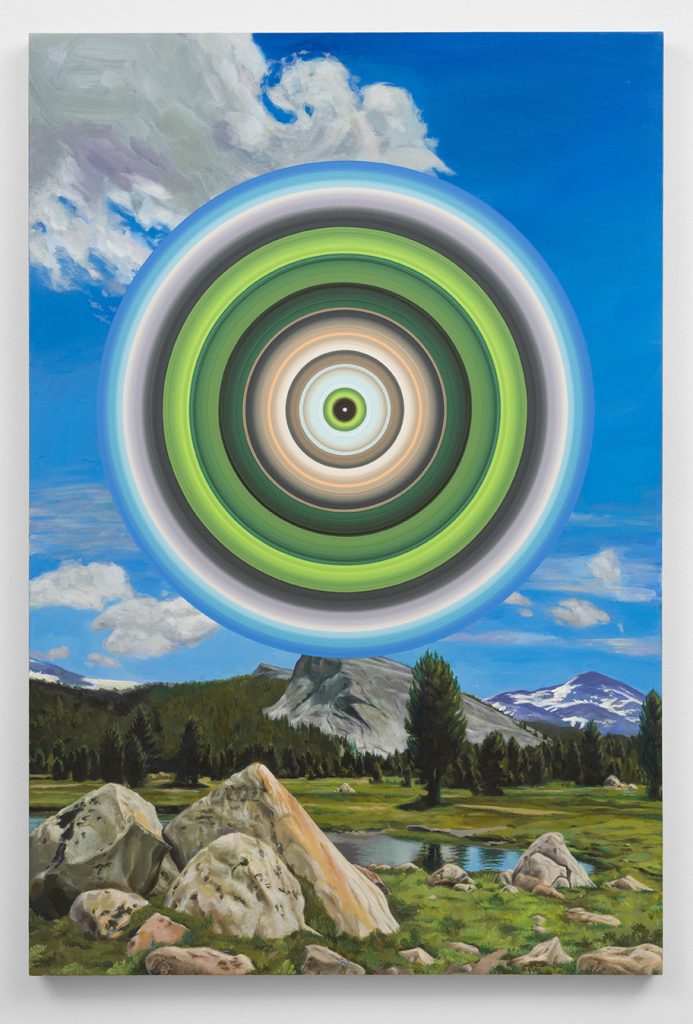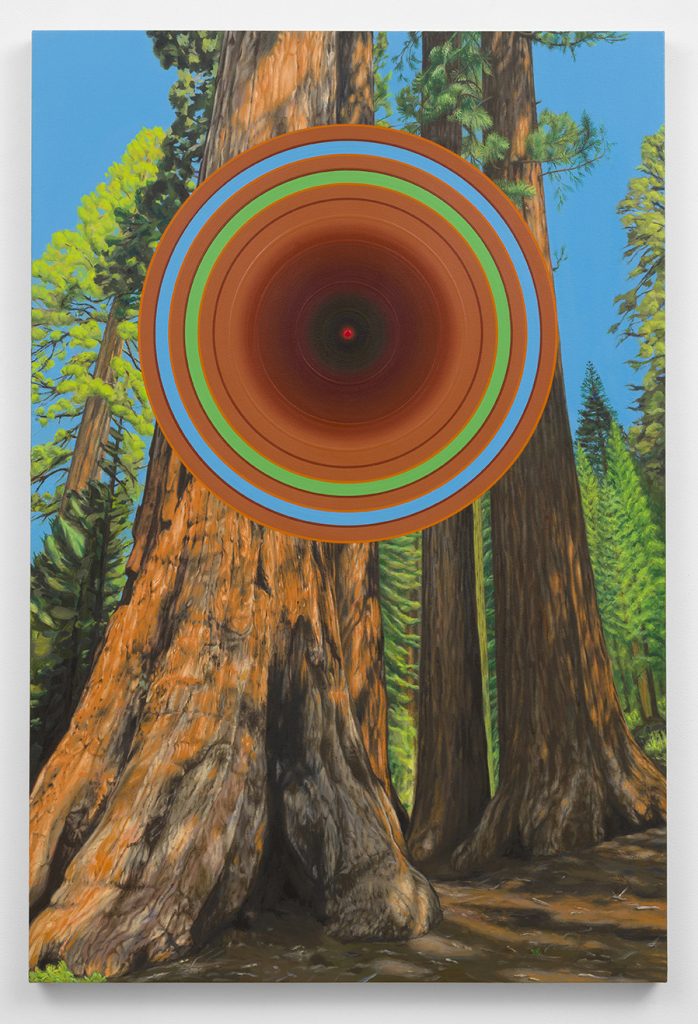


Over his 45 year career as an artist, Don Suggs has often returned to the vividly colored concentric circles that continue to remain at the core of his work. This ongoing fascination with circular motifs first began at a young age. Suggs recounts, “The most memorable representation from my obligatory Bible studies as a child was that of the whirling ‘flaming sword’ from Genesis 3:4. The illustration that went along with my Bible lesson hinged on that giant circle of flames.”
In a recent series or paintings and prints titled “Paradise,” Suggs employs the circular abstraction to explore the role imagery plays in our perception of nature. Pictured below are two “Paradise Paintings” in which the artist renders the background in oil paint and with a heightened sense of color. The circular overlay, also painted in oil, serves to provide a clue into understanding what lies beneath. In Tuolumne (pictured bottom left) a spring time vista of Tuolumne Meadows in Yosemite, Suggs provides a relatively straightforward translation of the colors that exist within the landscape. In Bachelor Heart (picture right), based on a grove of giant sequoias also in Yosemite, the circular overlay takes on metaphorical and fantastical implications, and seeks to reveal the inner “consciousness” of these ancient trees.
Upon studying his paintings more closely, one may wonder: How does Suggs achieve circular perfection? Pictured above is the hanging contraption, devised by Suggs, which allows him to suspend over his painting while it rotates on a platform below.
His upcoming exhibition “Paradise” opens at L.A. Louver on Wed, May 25. Click here to see a video of Suggs speaking about this body of work.
IMAGES: (left) Don Suggs in his studio, 2010; (middle, right) Don Suggs, Tuolumne, 2013, oil on canvas, 48 x 32 in. (121.9 x 81.3 cm); Don Suggs, Bachelor Heart, 2013, oil on canvas, 48 x 32 in. (121.9 x 81.3 cm)
